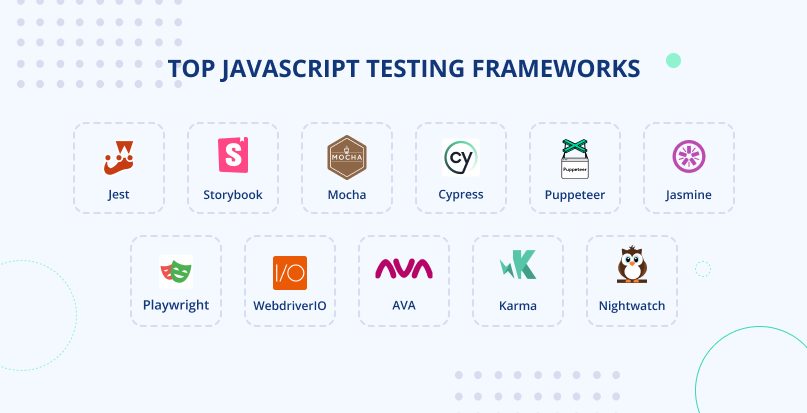In the fast-paced world of modern software development, writing clean, functional code is only half the battle. Ensuring that code remains reliable, maintainable, and bug-free as it evolves is paramount. This is where automated testing comes in, acting as a safety net that validates application logic with every change. Among the plethora of tools available in the JavaScript ecosystem, Mocha.js stands out as a mature, flexible, and powerful testing framework. It provides a solid foundation for organizing and running tests for any JavaScript project, from simple browser-based utilities to complex server-side applications built with Node.js.
Mocha’s core philosophy is flexibility. It provides the essential structure for defining test suites and cases but remains unopinionated about which assertion, mocking, or spying libraries you use. This allows developers to tailor their testing stack precisely to their project’s needs, integrating seamlessly with popular libraries like Chai for assertions and Sinon.js for mocks. Whether you’re working with cutting-edge frameworks like React News and Svelte News, or building robust backends with Express.js News or NestJS News, understanding Mocha is a fundamental skill for producing high-quality, professional-grade code. This article will take a deep dive into Mocha.js, exploring its core concepts, practical implementation, advanced techniques, and best practices to elevate your testing strategy.
Understanding the Core Concepts of Mocha.js
At its heart, Mocha provides a simple yet expressive Domain-Specific Language (DSL) for structuring your tests. This structure makes tests highly readable and easy to organize, which is crucial for long-term maintainability. The primary building blocks of any Mocha test file are describe() and it().
Test Suites with describe()
The describe(name, callback) function is used to group related tests together into a “suite.” You can nest describe blocks to create a hierarchical structure that mirrors your application’s logic. For example, you might have a top-level describe for a user authentication module, with nested describe blocks for registration, login, and password reset functionalities.
Test Cases with it()
The it(description, callback) function defines an individual test case. The description should be a human-readable string explaining what the test is supposed to verify (e.g., “it should return the sum of two numbers”). The actual test logic, including assertions, resides within the callback function.
Setup and Teardown with Hooks
Mocha provides “hooks” that allow you to run code before or after your tests. This is essential for setting up preconditions (like connecting to a test database) and cleaning up afterward.
before(): Runs once before the first test in thedescribeblock.after(): Runs once after the last test in thedescribeblock.beforeEach(): Runs before every singleitblock.afterEach(): Runs after every singleitblock.
Let’s see these concepts in action with a basic example. Imagine we have a simple utility module, math.js:
// src/math.js
const add = (a, b) => a + b;
const subtract = (a, b) => a - b;
module.exports = { add, subtract };Our corresponding test file, test/math.test.js, would use Mocha’s structure and Node.js’s built-in assert module to verify its behavior.
// test/math.test.js
const assert = require('assert');
const { add, subtract } = require('../src/math');
describe('Math Module', () => {
describe('add()', () => {
it('should return the sum of two positive numbers', () => {
assert.strictEqual(add(2, 3), 5);
});
it('should return the sum of a positive and a negative number', () => {
assert.strictEqual(add(5, -3), 2);
});
});
describe('subtract()', () => {
beforeEach(() => {
// This hook runs before each test in this 'subtract' block
console.log('Running a subtract test...');
});
it('should return the difference of two numbers', () => {
assert.strictEqual(subtract(10, 4), 6);
});
});
});Practical Implementation: Setup, Assertions, and Asynchronous Testing
To start using Mocha, you first need to add it to your project. It’s typically installed as a development dependency.
npm install mocha --save-dev
Next, you should add a test script to your package.json file. Mocha will automatically look for tests in a test/ directory by default.

"scripts": { "test": "mocha" }
Now, running npm test in your terminal will execute your test suite.
Integrating an Assertion Library: Chai
While Node’s built-in assert works, most developers prefer a more expressive assertion library. This is where Mocha’s flexibility shines. The most popular choice is Chai, which provides multiple assertion styles (BDD styles expect and should, and TDD style assert). Let’s refactor our previous example to use Chai’s expect syntax, which often leads to more readable tests.
First, install Chai: npm install chai --save-dev
Now, we can update our test file to use it.
// test/math.chai.test.js
const { expect } = require('chai');
const { add } = require('../src/math');
describe('Math Module with Chai', () => {
describe('add()', () => {
it('should return the sum of two numbers', () => {
const result = add(5, 5);
expect(result).to.equal(10);
expect(result).to.be.a('number');
});
it('should handle negative numbers correctly', () => {
const result = add(-5, 2);
expect(result).to.equal(-3);
});
});
});Notice how expect(result).to.equal(10); reads almost like plain English. This is a key reason why many developers working on projects with Vue.js News or Angular News prefer this BDD style.
Handling Asynchronous Code
Modern JavaScript is inherently asynchronous. Mocha provides excellent support for testing asynchronous operations, such as API calls or database queries. The recommended approach is to use Promises with async/await. If your test function is declared as async, Mocha will automatically wait for the returned promise to resolve or reject.
Let’s test an asynchronous function that fetches user data.
// src/userService.js
const fetchUserData = (userId) => {
return new Promise((resolve, reject) => {
setTimeout(() => {
if (userId === 1) {
resolve({ id: 1, name: 'John Doe', email: 'john.doe@example.com' });
} else {
reject(new Error('User not found'));
}
}, 50); // Simulate network delay
});
};
module.exports = { fetchUserData };
// test/userService.test.js
const { expect } = require('chai');
const { fetchUserData } = require('../src/userService');
describe('UserService', () => {
describe('fetchUserData()', () => {
it('should return user data for a valid ID', async () => {
const user = await fetchUserData(1);
expect(user).to.be.an('object');
expect(user).to.have.property('name', 'John Doe');
});
it('should reject with an error for an invalid ID', async () => {
try {
await fetchUserData(99);
} catch (error) {
expect(error).to.be.an('Error');
expect(error.message).to.equal('User not found');
}
});
});
});By marking the it callback as async and using await, Mocha handles the promise-based flow elegantly. This is crucial for testing backend logic in the Node.js News ecosystem, especially with frameworks like Koa News or Fastify News.
Advanced Techniques: Mocks, Stubs, and Reporters
For true unit testing, you need to isolate the code you’re testing from its external dependencies (like databases, APIs, or the file system). This is achieved using test doubles, such as mocks, stubs, and spies. Sinon.JS is the de facto standard for creating test doubles in the Mocha ecosystem.
Let’s install it: npm install sinon --save-dev

Stubs and Spies with Sinon.JS
- A Spy is a function that wraps another function, recording information about its calls (e.g., how many times it was called, and with what arguments).
- A Stub is like a spy but goes a step further by completely replacing the target function’s behavior. You can make a stub return a specific value, throw an error, or even execute custom logic.
Imagine a function that processes an order and sends an email notification. We want to test the order processing logic without actually sending an email. We can use Sinon to stub the email service.
// src/orderService.js
const emailService = require('./emailService');
const processOrder = (order) => {
if (!order || !order.items || order.items.length === 0) {
throw new Error('Invalid order');
}
// ... some order processing logic ...
const orderId = 'XYZ-123';
emailService.sendConfirmation(order.customerEmail, orderId);
return { success: true, orderId };
};
module.exports = { processOrder };
// test/orderService.test.js
const { expect } = require('chai');
const sinon = require('sinon');
const { processOrder } = require('../src/orderService');
const emailService = require('../src/emailService');
describe('OrderService', () => {
it('should process a valid order and send a confirmation email', () => {
// Create a stub for the sendConfirmation method
const emailStub = sinon.stub(emailService, 'sendConfirmation');
const order = { customerEmail: 'test@example.com', items: [{ id: 1, quantity: 2 }] };
const result = processOrder(order);
// Assert that the order processing was successful
expect(result.success).to.be.true;
expect(result.orderId).to.be.a('string');
// Assert that our stub was called correctly
expect(emailStub.calledOnce).to.be.true;
expect(emailStub.calledWith('test@example.com', result.orderId)).to.be.true;
// IMPORTANT: Restore the original function after the test
emailStub.restore();
});
});In this example, we replaced emailService.sendConfirmation with a stub. This allows us to verify that it was called with the correct arguments without any real email being sent. This technique is indispensable for testing complex applications and is a common pattern seen in projects using full-stack frameworks like RedwoodJS News or Meteor News.
Customizing Test Output with Reporters
Mocha comes with several built-in “reporters” that change how test results are displayed in the console. The default is spec, which provides the nested output we’ve seen so far. You can change it via the command line. For a more minimal output, you can use the dot reporter:
mocha --reporter dot
For a more whimsical output, try the nyan reporter:
mocha --reporter nyan

Custom reporters are useful for CI/CD integrations, where you might need output in a specific format like JUnit XML. This flexibility makes Mocha a great fit for professional development workflows that often involve build tools like Webpack News or modern alternatives like Vite News and Turbopack News.
Best Practices and Common Pitfalls
Writing tests is one thing; writing good tests is another. Following best practices ensures your test suite remains a valuable asset rather than a maintenance burden.
Best Practices
- Descriptive Naming: Your
describeanditblocks should read like a specification. A good test describes *what* it’s testing and *what* the expected outcome is. - Isolate Tests: Each test should be able to run independently. Avoid creating dependencies between tests where one test’s failure causes a cascade of others. Use
beforeEachandafterEachto reset state. - One Logical Assertion Per Test: While a test can have multiple `expect` statements, they should all be verifying a single logical outcome. If you find yourself testing multiple distinct behaviors in one
itblock, consider splitting it. - Prefer
async/await: For asynchronous tests, always prefer the modernasync/awaitsyntax over the olderdone()callback. It’s cleaner, less error-prone, and easier to read. - Mirror Source Structure: Organize your
test/directory to mirror yoursrc/directory. A file atsrc/utils/string.jsshould have its tests attest/utils/string.test.js.
Common Pitfalls to Avoid
- Forgetting to
awaita Promise: In anasynctest, if you call an asynchronous function but forget toawaitits result, the test will pass prematurely and silently, leading to false positives. This is a very common mistake. - Leaking State: Using
before()to set up state that is modified by tests can cause subsequent tests to fail. UsebeforeEach()to ensure a clean state for every test case. - Testing Implementation Details: Your tests should focus on the public API of a module (its inputs and outputs), not its internal implementation. Testing private methods makes your tests brittle and difficult to refactor.
- Slow Tests: Unit tests should be fast. Avoid real I/O operations (network, database, file system) by using stubs and mocks. Slower, integrated tests belong in a separate suite, often managed by tools like Cypress News or Playwright News.
Conclusion
Mocha.js has firmly established itself as a cornerstone of the JavaScript testing landscape. Its simplicity, flexibility, and robust feature set make it an excellent choice for projects of any scale. By providing a clear structure for organizing tests and seamlessly integrating with powerful libraries like Chai and Sinon.js, Mocha empowers developers to build reliable and maintainable applications. From front-end components built with Preact News or Lit News to complex back-end services powered by Node.js News, the principles of testing with Mocha remain universally applicable.
As you move forward, consider exploring more of the Mocha ecosystem. Investigate code coverage tools like Istanbul (nyc) to see how much of your code is covered by tests. Look into integrating your Mocha test suite into a continuous integration (CI) pipeline to automate testing on every commit. By embracing the discipline of testing and mastering tools like Mocha, you invest in the long-term health and quality of your codebase, ensuring it can grow and adapt with confidence.

